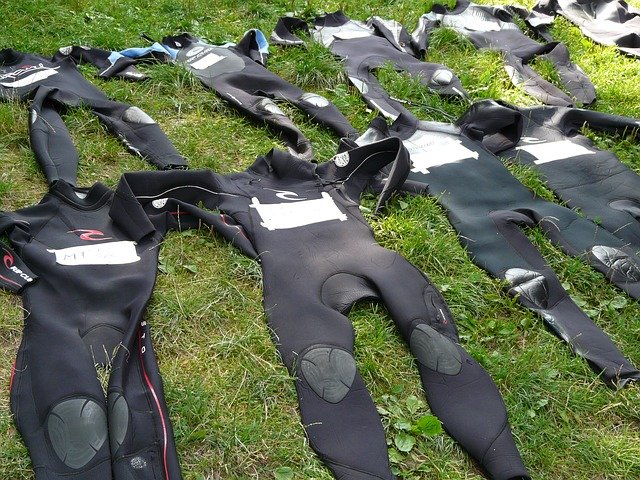Neoprene in construction
Contents |
[edit] Introduction
Neoprene is a synthetic rubber made from hydrochloric acid and acetylene, or from the polymerisation of chloroprene. It is also known as polychloroprene and pc-rubber. Developed by US-based DuPont in the 1930s, it was first sold under the trade name DuPrene, but its success was hampered by a powerful odour. This was rectified by the introduction of a revised, cheaper process which allowed sales to increase dramatically.
[edit] Properties
Neoprene is relatively inert and, compared to ordinary rubber, is more chemically stable. It shows greater resistance to ozone, UV degradation, light, heat, oxidation and petroleum and remains flexible over a wide range of temperatures. Its pliability and corrosion resistance make it suitable for use in hoses and as gaskets (for example, for sealing glazing and cladding units).
Neoprene itself tends to be waterproof, but neoprene products can allow the entry of water though seams or if they are cracked or damaged.
It is available in a number of forms including sheet, roll and strip, and in thicknesses typically from 0.1mm to 25mm.
[edit] Applications
In the home, neoprene can be found in products including remote controls, mouse pads and laptop sleeves.
It is used in construction for applications including; elastomeric membranes and flashings, noise isolation, electrical insulation, motor fan-belts and gaskets. Because it is more fire resistant than hydrocarbon-based rubbers, it can be used for fire doors and in personal protection equipment such as face masks and gloves.
Neoprene can be applied as a waterproofing layer on roofs in either sheet or liquid-applied elastomeric membranes. It can also provide the load-transferring contact surface between two components, such as a beam and the substructure, and can absorb vibration and prevent sound transmission. Neoprene pads are used for bearings in bridge construction where they can absorb horizontal movement in multiple directions.
Used as a foam strip, or foam tape, neoprene offers a solution to air and water leakage problems and is used widely for glazing applications.
[edit] Related articles on Designing Buildings Wiki
- Adhesives
- Acrylic.
- Carbon fibre
- Cavity wall insulation
- ETFE
- Glass for buildings
- Glass reinforced concrete
- Glass reinforced plastic GRP
- Graphene in civil engineering
- Grouting in civil engineering.
- Icynene spray foam insulation
- Mastic sealant
- Nylon
- Phenolic foam insulation
- Plastic
- Polyamide intermediates
- Polyethylene.
- Polystyrene
- Polyurethane spray foam in structurally insulated panels and composite structures
- Polyvinyl chloride PVC
- Recyclable construction materials
- Renewable chemicals
- Solid wall insulation
- Structural steelwork
- Sustainable materials
- Thermoplastic materials in buildings
- Transparent insulation
Featured articles and news
RTPI leader to become new CIOB Chief Executive Officer
Dr Victoria Hills MRTPI, FICE to take over after Caroline Gumble’s departure.
Social and affordable housing, a long term plan for delivery
The “Delivering a Decade of Renewal for Social and Affordable Housing” strategy sets out future path.
A change to adoptive architecture
Effects of global weather warming on architectural detailing, material choice and human interaction.
The proposed publicly owned and backed subsidiary of Homes England, to facilitate new homes.
How big is the problem and what can we do to mitigate the effects?
Overheating guidance and tools for building designers
A number of cool guides to help with the heat.
The UK's Modern Industrial Strategy: A 10 year plan
Previous consultation criticism, current key elements and general support with some persisting reservations.
Building Safety Regulator reforms
New roles, new staff and a new fast track service pave the way for a single construction regulator.
Architectural Technologist CPDs and Communications
CIAT CPD… and how you can do it!
Cooling centres and cool spaces
Managing extreme heat in cities by directing the public to places for heat stress relief and water sources.
Winter gardens: A brief history and warm variations
Extending the season with glass in different forms and terms.
Restoring Great Yarmouth's Winter Gardens
Transforming one of the least sustainable constructions imaginable.
Construction Skills Mission Board launch sector drive
Newly formed government and industry collaboration set strategy for recruiting an additional 100,000 construction workers a year.
New Architects Code comes into effect in September 2025
ARB Architects Code of Conduct and Practice available with ongoing consultation regarding guidance.
Welsh Skills Body (Medr) launches ambitious plan
The new skills body brings together funding and regulation of tertiary education and research for the devolved nation.
Paul Gandy FCIOB announced as next CIOB President
Former Tilbury Douglas CEO takes helm.
UK Infrastructure: A 10 Year Strategy. In brief with reactions
With the National Infrastructure and Service Transformation Authority (NISTA).























